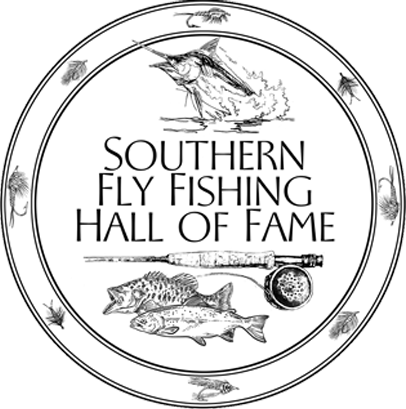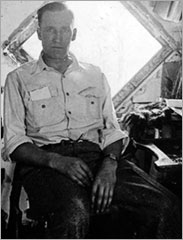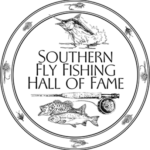Joe Messinger, Sr.,1892-1966, was a resourceful and talented fly tier who experienced serious war injuries and was told that he’d be confined to a wheelchair for the rest of his life (he fortunately learned to walk with a cane), yet he brought to the fly-tying world creations still popular today. Joe had been tying flies before his military duty, but after the war he found himself catching fish and tying flies under different yet creative circumstances thanks to having undergone several surgeries and rehabilitation after World War I. His old Hudson automobile back seat was removed and replaced with a tying bench with a dome light installed overhead. The car trunk held a coop of live roosters, enabling Messinger to pluck their hackles as needed. Recognizing that bass love frogs, Messinger’s earliest focus was tying bass flies and inventing his clipped deer hair bucktail frog, known as the Messinger Bucktail Frog. He created the Nitehummer in the 1920, a fly that was created to simulate moths. With its deer hair tail, wings, and clipped hair body, it was the precursor of one of the most famous trout flies ever tied – the Irresistible, a fly originally tied in the late 1930s to imitate an egg-laden female drake that he called Joe’s deer hair drake fly. Joe originally tied the fly using natural blue-gray clipped deer hair on the dorsal aspect of the fly body, and white clipped deer hair on the underside. Joe used an original method of attaching deer hair to the hook shank for clipping that allows for the lateral separation of hair colors. Unlike the methods commonly used today for creating clipped deer hair bodies, Messinger placed the hook in the tying vise vertically. Each individual hair bunch increment was tied down to the hook with a knot, increment after increment; the hair was not “spun” around the hook shank, as is common practice today when creating clipped deer hair fly or bug patterns. In the beginning, Joe selected dyed claret or wine-colored hackle which may have given the fly sustained visibility as it floated along through the rough water. Later he also tied the fly with brown or ginger hackle that matched the hair shade on top of the fly body. Yet no matter what hackle shade or wing type, Joe Messinger’s Irresistible has survived for many years. Bergman mentioned the Irresistible in With Fly, Plug and Bait (1947) and in later editions of Trout and included the fly in his new 1951 list of additional dry flies not presented in his first edition of the book. Bergman recognized Joe as the originator of this clipped deer body hair and deer hair wings. In the chapter titled Landing Bass on the Fly, which first appeared in the Complete Book of Fly Fishing in 1958 and was later reprinted in Joe Brooks on Fishing in 2004, Joe Brooks wrote that Joe Messinger’s famous jointed-leg Hair Frog top-water lure probably caught more smallmouth bass than any other single lure. Joe was a conservationist who advised state agencies on fisheries management practices in West Virginia, Pennsylvania and Maryland in the 1930s-40s. Joe’s 2015 Stream Blazer exhibit is now on display in the museum.
Joe M. Messinger, Sr. – Inducted posthumously in 2017 in the Crafts category as a professional fly tier who is widely recognized for the creativity and wisdom in designing the irresistible. Joe’s patterns also include: Meadow Frog, Golden Frog, Dogcatcher and Bleeding Hair Frog.


